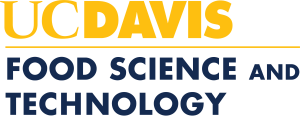A. Specific learning outcomes. At the end of the course students will be able to:
- Apply measures of central tendency and dispersion.
- Classify the nature of numbers: nominal, ordinal, interval and ratio, continuous and discrete variables.
- Appraise relevance for parametric statistics and application of probability computations to difference test chance levels.
- Discuss normal distributions, z-scores, the sampling distribution, the central limit theorem and the use of distributions in parametric tests.
- Demonstrate the structure of statistical tests including the binomial expansion, binomial probabilities.
- Assess null and alternative hypotheses, significance levels, Type I and Type II errors and α and β considerations, one and two-tailed tests.
- Evaluate both sample size and effect size effects on significance and note misunderstandings.
- Apply Sign test, binomial comparison of proportions and significance tests to forced-choice difference methods.
- Apply Chi-Squared, one-way and two-way tests, Student’s t-test, one sample, two sample, related sample and independent sample tests
- Appraise chi-squared and t-test assumptions and distributions.
- Assess corrections for continuity, occurrence of free and fixed margins,
- Categorize experimental counterbalancing procedures
- Illustrate homoscedasticity and heteroscedasticity effects on computation.
- Assess normality assumptions in the population and evaluate their application to scaling data.
- Describe Analysis of Variance, the structure and application of one-way, two- way, three- and four-way ANOVAS, as well as the logic and assumptions behind these tests.
- Assess interaction: one-, two-, three-, four- and many-way interactions and explain their interpretation.
- Appraise pooling and judge when to use it.
- Compare fixed and random effects and how sampled judges are a random effect but descriptive analysis judges are a fixed effect.
- Describe and appraise mixed models
- Discuss and describe Split plot designs, variations in use for storage studies and quality control.
- Illustrate use and misuse of multiple comparisons: Fisher’s LSD, Sheffé, Newman-Keuls, Duncan, Tukey, Dunnett and Dunn tests.
- Apply and manipulate SAS programs for ANOVA.
- Apply and operate correlation computations: Pearson’s ‘r’ and Spearman’s ρ.
- Describe their assumptions using data plots.
- Describe the mathematical manipulations of ‘r’ and the use of Fisher’s Z.
- Assess logical mistakes and faulty deductions in the use of correlations.
- Assess the suitability of rank correlations especially for correlations between sensory and instrumental data.
- Compute linear regression.
- Apply and compute nonparametric ranking two sample difference tests: Wilcoxon, Mann-Whitney-U test, Rank Sums test.
- Distinguish other equivalent tests.
- Compare and assess Friedman ranked ANOVA with Newell-McFarlane, Basker, Christensen et al tests.
- Apply and compute confidence intervals.
- Appraise considerations of power, its causes and effects.
- Apply and illustrate the beta-binomial where judges and replicate tastings are combined to increase power.
- Discuss overdispersion and gamma.
- Assess and choose which statistical tests are applicable to a variety of sensory data, from considerations of the assumptions behind the tests, the type of data collected, test power and experimental design.
- Evaluate experiments taking into account the statistical requirements required for the subsequent data analysis, so that assumptions are not broken.
How this course addresses IFT core competencies
The course is a senior level course taught in the Fall quarter. FST 117 is a 4-unit course consisting of one 3-hour lecture per week with associated 1-Hour discussions sections, to check computer competence and discuss application of the tests in the food industry. Besides the TA 1-hour office hours session, the instructor runs a 9am -11pm phone service office hours 7-days a week. This allows students to phone if they are having difficulty with their problem sets.
B. Tools used to assess program outcomes
Weekly take-home problem sets are given every week so that students perform the statistical tests that are being taught each week. They are required to perform the tests the old-fashioned way, using calculators, so that they become aware of how the numbers are manipulated. Thenceforth they use computers. Each week, they are given quizzes in class, which test their logical understanding of the tests, and also ensure that they actually did their problem sets themselves.
C. Brief summary of assessments to date
This course had been taught by the instructor (Professor Emeritus O'Mahony) since 1977, before the arrival of Professor Delarue. It uses Dr. O'Mahony's textbook: Sensory Evaluation of Food; Statistical Methods and Procedures and a supplementary manual of course notes. The goal of the course is to introduce students to the logic, workings and procedures of univariate statistics so that they may go on to study more advanced multivariate methods without trepidation. Each year students are required to complete a course evaluation and this, along with students’ comments during the course provide useful information for developing better methods for explaining the course topics and these are incorporated into the yearly course revisions. Course assessments have always been good but we can always do better. I am sometimes invited to give the course to companies/universities in USA, Mexico and China.
